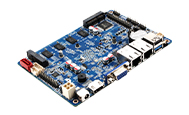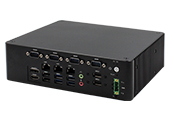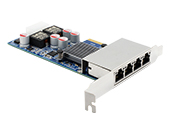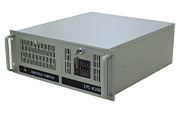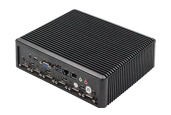Understanding USB Type-C, USB 3.1, USB 3.2, USB4, and USB4 V2
The Universal Serial Bus (USB) has become the standard interface for connecting and powering devices. Over the years, USB has evolved significantly, introducing new versions and connectors that offer faster data transfer speeds, better power delivery, and improved versatility. Among the latest advancements are USB Type-C, USB 3.1, USB 3.2, USB4, and USB4 Version 2 (V2). This blog post aims to provide a comprehensive understanding of these technologies, their features, and their differences.
The Evolution of USB
USB Type-C: The Universal Connector
USB Type-C is a revolutionary connector that has gained widespread adoption due to its versatility, ease of use, and enhanced capabilities. Unlike its predecessors, USB Type-C features a reversible design, meaning it can be plugged in either way, eliminating the frustration of incorrect insertions.
Key Features of USB Type-C:
Reversible Design: USB Type-C connectors are reversible, making them easy to use.
High Data Transfer Rates: Supports high-speed data transfer, especially with newer USB versions.
Power Delivery (USB PD): Capable of delivering up to 100 watts of power, making it suitable for charging laptops, tablets, and other high-power devices.
Video Output: Supports video output, allowing it to be used with display protocols like HDMI and DisplayPort.
Versatility: USB Type-C can carry various types of data, including audio, video, and power, through a single cable.
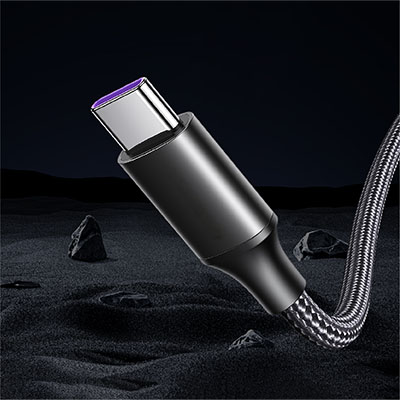
USB 3.1: The Speed Booster
USB 3.1, also known as SuperSpeed USB, introduced significant improvements in data transfer speeds and power delivery over its predecessor, USB 3.0. USB 3.1 is divided into two generations: USB 3.1 Gen 1 and USB 3.1 Gen 2.
USB 3.1 Gen 1:
Data Transfer Speed: Up to 5 Gbps.
Backward Compatibility: Compatible with USB 3.0 and USB 2.0.
USB 3.1 Gen 2:
Data Transfer Speed: Up to 10 Gbps.
Improved Performance: Offers better performance for high-bandwidth applications like 4K video transfer and fast storage devices.
USB 3.2: The Next Level
USB 3.2 builds upon the foundation of USB 3.1, offering even higher data transfer rates and improved performance. It introduces multi-lane operation, allowing two lanes of 5 Gbps or two lanes of 10 Gbps operation, effectively doubling the data transfer speeds.
Key Features of USB 3.2:
Data Transfer Speed: Up to 20 Gbps with dual-lane operation.
Backward Compatibility: Compatible with USB 3.1 and USB 3.0.
Versatile Connectors: Supports Type-A, Type-B, and Type-C connectors, with Type-C being the preferred choice for new devices.
USB4: The Ultimate USB
USB4 represents a significant leap forward in USB technology, offering unprecedented data transfer speeds, enhanced power delivery, and greater versatility. It consolidates multiple protocols, including Thunderbolt 3, into a single specification, providing a more unified and efficient user experience.
Key Features of USB4:
Data Transfer Speed: Up to 40 Gbps, supporting high-speed data, audio, and video transfer.
Dynamic Bandwidth Allocation: Allocates bandwidth dynamically between data and display protocols.
Enhanced Power Delivery: Supports USB PD, delivering up to 100 watts of power.
Universal Connector: Uses the USB Type-C connector, ensuring compatibility with a wide range of devices.
Backward Compatibility: Compatible with USB 3.2, USB 2.0, and Thunderbolt 3.
USB4 Version 2: The Future of USB
USB4 Version 2 (V2) is the latest iteration of the USB standard, promising even higher data transfer speeds and improved performance over USB4. While details about USB4 V2 are still emerging, it is expected to offer significant enhancements in speed, power delivery, and functionality.
Key Features of USB4 V2:
Data Transfer Speed: Expected to exceed 40 Gbps, with potential speeds up to 80 Gbps.
Advanced Power Delivery: Enhanced power delivery capabilities, potentially supporting more than 100 watts.
Improved Protocol Support: Better support for various data and display protocols, ensuring seamless connectivity.
Backward Compatibility: Maintains compatibility with previous USB versions and Thunderbolt 3.
How USB Works
Understanding how USB works can help you appreciate the advancements in each new version. USB connections follow a host/client architecture, where the host (typically a PC) controls the communication with connected peripherals.
Host/Client Architecture
Host: The primary controller of USB connections, usually a computer.
Client: The peripheral device, such as a keyboard, mouse, or external hard drive.
Plug-and-Play Functionality
When a USB device is plugged into the host, the operating system detects the device's firmware and loads the necessary drivers for data transmission. This plug-and-play functionality makes USB devices easy to use and set up.
Differential Signaling and Protocol Stack
USB cables use differential signaling, which helps reduce interference and ensures reliable data transfer. A layered protocol stack manages the communication between the host and the peripheral, ensuring efficient data transmission.
Power Delivery
USB cables can provide power to connected devices, with the amount of power varying by USB version. USB PD allows devices to negotiate power requirements, delivering up to 100 watts of power through USB-C connections. This capability is particularly useful for charging laptops, tablets, and other high-power devices.
USB Transfer Speeds and Capabilities
The various USB versions offer different data transfer speeds and capabilities. Here's a summary of the major USB versions and their characteristics:
USB 1.1
Year Released: 1998
Transfer Speed: Up to 12 Mbps
Connectors: Type-A and Type-B
Use Case: Basic input peripherals like keyboards and mice.
USB 2.0
Year Released: 2000
Transfer Speed: Up to 480 Mbps
Connectors: Type-A, Type-B, Mini-USB, Micro-USB
Use Case: More sophisticated peripherals like external hard drives and printers.
Compatibility: Backward compatible with USB 1.1
USB 3.0
Year Released: 2008
Transfer Speed: Up to 5 Gbps
Connectors: Type-A, Type-B, Micro-B
Use Case: Large file transfers, high-resolution media, and data-intensive applications.
Compatibility: Backward compatible with USB 2.0 and USB 1.1
USB 3.1
Year Released: 2013 (Gen 1), 2015 (Gen 2)
Transfer Speed: Gen 1 up to 5 Gbps; Gen 2 up to 10 Gbps
Connectors: Type-A, Type-B, Micro-B, Type-C
Use Case: High-performance storage devices, 4K video transfer, and faster charging with USB PD.
Compatibility: Backward compatible with USB 3.0 and earlier versions
USB 3.2
Year Released: 2017 (Gen 2×1), 2019 (Gen 2×2)
Transfer Speed: Gen 2×1 up to 10 Gbps; Gen 2×2 up to 20 Gbps
Connectors: Type-A, Type-B, Type-C
Use Case: Same as USB 3.1, but with even faster speeds for the Gen 2×2 variant.
Compatibility: Supports Thunderbolt 3 alternate mode over USB-C. Backward compatible with USB 3.1, 3.0, and earlier versions
USB4
Year Released: 2019
Transfer Speed: Up to 20 Gbps (USB4 20) or 40 Gbps (USB4 40)
Connectors: Type-C
Uses: Similar to USB 3.2, but with higher potential speeds and the ability to dynamically allocate bandwidth between data and video.
Compatibility: Backward compatible with USB 3.2, Thunderbolt 3, and earlier versions.
USB4 V2
Year Released: Expected in the near future
Transfer Speed: Potentially up to 80 Gbps
Connectors: Type-C
Uses: Enhanced performance for data and video transfer, improved power delivery, and better support for various protocols.
Compatibility: Backward compatible with previous USB versions and Thunderbolt 3.
USB and Malware
While USB technology has brought many benefits, it has also introduced new security challenges. One notable example is the USB drop attack, where a malware-infected USB drive is left in a public place. When an unsuspecting user plugs the USB drive into their computer, the malware executes, potentially exfiltrating sensitive information or using the infected computer for further attacks.
To mitigate these risks, it's essential to use antivirus software with real-time scanning capabilities, which can monitor for malicious activity when a USB drive is inserted. Additionally, users should exercise caution when connecting unknown USB devices to their computers.
USB Pros and Cons
USB technology has become the default connection port and cable type for a wide range of peripheral devices. However, it's important to understand both the advantages and disadvantages of using USB.
Pros:
Reduces Cable Clutter: USB reduces the need for multiple connection cables by supporting various types of data and power transfer through a single interface.
Backward Compatibility: Newer versions of USB are backward compatible, allowing older devices to connect to modern systems.
Ease of Use: USB connections are plug-and-play, requiring minimal setup.
Range of Speeds: USB offers a variety of data transfer speeds, from the slower USB 2.0 to the ultra-fast USB4.
Cons:
Signal Degradation: Extremely long USB cables can experience signal degradation, affecting data transfer quality.
Power Limitations: Older versions of USB may not provide sufficient power for all use cases.
Wear and Tear: Frequent plugging and unplugging can wear out cable connections over time.
Variable Speeds and Connectors: Different USB versions offer varying transfer speeds and connector types, which can be confusing for consumers.
USB and Thunderbolt
USB and Thunderbolt are two competing standards for data and power transfer, each with its own strengths and weaknesses.
USB vs. Thunderbolt: A Comparison
Feature | USB4 | Thunderbolt 4 |
Availability | Widely available in new desktops, laptops, and smartphones. | Available in all Apple computers and many high-end Windows laptops. |
Cost | Generally, less expensive. | More expensive, particularly for older versions. |
Transfer Speeds | Up to 80 Gbps, with starting speeds as low as 20 Gbps. | Up to 40 Gbps, with minimum speeds of 32 Gbps. |
Compatibility | Fully backward compatible with adapters. Also works with Thunderbolt 3 and 4. | Thunderbolt 3 and 4 work with each other; limited compatibility with general USB-C devices. |
Display Support | Supports multiple 8K displays or a single 16K display. | Supports up to two 4K displays or a single 8K display. |
Power Delivery | Up to 100 watts. | Up to 100 watts. |
Key Takeaways
Connector Type: Both USB4 and Thunderbolt 4 use the USB Type-C connector, making them physically interchangeable.
Functionality: USB4 and Thunderbolt 4 offer similar capabilities, but USB4 is more widely adopted and available at lower costs.
Backward Compatibility: Both standards are backward compatible, but users must ensure they are using the correct cables and adapters to achieve the maximum performance.
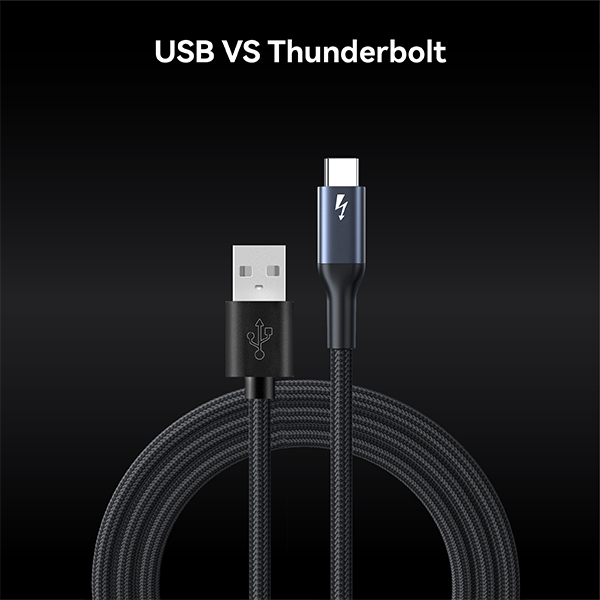
The advancements in USB technology, from USB Type-C to USB4 V2, have transformed the way we connect, transfer data, and power our devices. USB Type-C's reversible design, coupled with the high-speed capabilities of USB 3.1, USB 3.2, USB4, and the forthcoming USB4 V2, offer unparalleled convenience and performance.
As these technologies continue to evolve, they promise to deliver even greater speeds, improved power delivery, and enhanced versatility, making them indispensable in our increasingly connected world.
Understanding the differences and capabilities of each USB version can help you make informed decisions when selecting devices and peripherals, ensuring you get the best performance and compatibility for your needs. Whether you're transferring large files, charging your devices, or connecting multiple peripherals, USB technology has you covered.
Works Cited
Britannica. "USB." Encyclopædia Britannica, https://www.britannica.com/technology/USB.
Design Reviews. "USB Power Delivery and Data Transfer Standards." Design Reviews, https://designreviews.com/usb-power-delivery-and-data-transfer-standards/.
Detailed USB 3.1 and USB 3.2 Specifications. USB-IF. Retrieved from https://www.usb.org.
IONOS. "What is USB?" IONOS Digital Guide, https://www.ionos.com/digitalguide/server/know-how/what-is-usb/.
Kingston. "USB 3.0." Kingston Technology, https://www.kingston.com/en/usb-flash-drives/usb-30.
PCMag. "USB." PCMag Encyclopedia, https://www.pcmag.com/encyclopedia/term/usb.
Spiceworks. "Universal Serial Bus." Spiceworks, https://www.spiceworks.com/tech/tech-general/articles/universal-serial-bus/.
Techopedia. "Universal Serial Bus (USB)." Techopedia, https://www.techopedia.com/definition/2320/universal-serial-bus-usb.
Understanding USB Power Delivery. USB-IF. Retrieved from https://www.usb.org.
USB Type-C Overview and Features. USB-IF. Retrieved from https://www.usb.org.
USB4 Specifications and Capabilities. USB-IF. Retrieved from https://www.usb.org.
ViewSonic. "USB-C, USB-B, and USB-A: What’s the Difference?" ViewSonic Library, https://www.viewsonic.com/library/tech/usb-c-usb-b-and-usb-a-whats-the-difference/.
-
 Best ATX Motherboard Manufacturers in 20242024-06-24Discover the world of ATX motherboards with our comprehensive guide Learn about their history, variations like microATX and EATX, and how to choose the right one for your needs Whether you re a gamer, PC enthusiast, or involved in industrial applicatio
Best ATX Motherboard Manufacturers in 20242024-06-24Discover the world of ATX motherboards with our comprehensive guide Learn about their history, variations like microATX and EATX, and how to choose the right one for your needs Whether you re a gamer, PC enthusiast, or involved in industrial applicatio -
Understanding USB Type-C, USB 3.1, USB 3.2, USB4, and USB4 V22024-06-24Explore the evolution of USB technology from USB Type-C to USB4 V2 in our comprehensive blog Understand USB 3 1, USB 3 2, and USB4, including their features, data transfer speeds, power delivery capabilities, and compatibility Learn how these advancemen
-
 Maxtang at COMPUTEX Taipei 20242024-05-30Join Maxtang Computer at COMPUTEX Taipei 2024, the premier tech event in Taiwan! Discover the latest in IT and electronic products from June 4-7 at Nangang TaiNEX 2 Relive the excitement of COMPUTEX 2023 and get ready for another year of groundbreaking innovations
Maxtang at COMPUTEX Taipei 20242024-05-30Join Maxtang Computer at COMPUTEX Taipei 2024, the premier tech event in Taiwan! Discover the latest in IT and electronic products from June 4-7 at Nangang TaiNEX 2 Relive the excitement of COMPUTEX 2023 and get ready for another year of groundbreaking innovations

